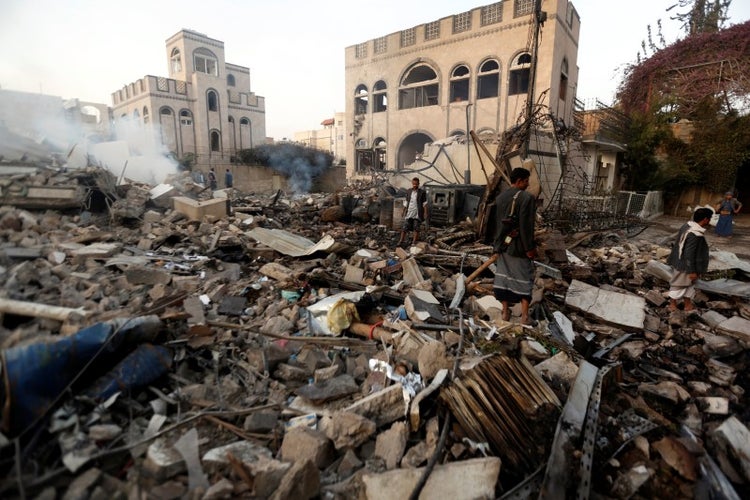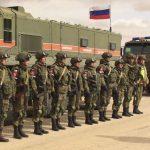On March 26, the United Nations Secretary General, António Guterres called for the immediate cessation of hostilities in Yemen. His request for a negotiated political solution was welcomed by both the legitimate government, the Arab coalition and the Houthis. But shortly after the announcement of the state of emergency by the secessionists of the Southern Transition Council (STC) and their will to establish the self-government in the regions under their control highlighted the fragility of any agreement in Yemen. In reality de facto nothing changes after this declaration. But it is as if the STC wanted to highlight weight and strength at a time when Riyadh is trying to find a way out from the Yemen impasse. The statement only further accentuates the split in the alliance between Saudi Arabia and the United Arab Emirates and their different strategic objectives.
The modern Yemeni State led by Ali Abdullah Saleh was formed in 1990 with the unification of the Yemeni Arab Republic in the north and the Democratic People’s Republic of Yemen in the south. Saleh was immediately supported by the US and its main ally in the gulf, Saudi Arabia. Despite the resumption of the separatist movements in the south in 2007, the conflict started with the failure of the political transition during the riots that forced President Saleh to hand over the power to his deputy, Abdrabbuh Mansour Hadi, in 2011. The Houthi movement, formally known as Ansar Allah who belongs to the Ziyadite Shi’ite Muslim minority of Yemen, led several rebellions against Saleh between 2004 and 2010, until then in 2014 it gradually took over the capital Sanaa.
Alarmed by the rise of the Houthi, a group militarily supported by the Islamic Republic of Iran, in 2015 at the request of Hadi, Saudi Arabia and eight other States began an air campaign aimed at defeating the Houthis. Iran and the Houthis share geopolitical interests: Tehran seeks to challenge Saudi and American dominance in the region, and the Houthis oppose the government supported by Saudi Arabia and the United States.
The importance of Yemen depends very much on its strategic position. Yemen is located on a Strait connecting the Red Sea with the Gulf of Aden, through which pass most of the world’s oil shipments. The Strait of Hormuz is one of the most important corridors in the world for the volume of oil that passes through the strait. According to the US Energy Information Agency (EIA) in 2018, “the daily oil flow in the Strait was on average 21 million barrels per day, which is the equivalent of approximately 21% of the global consumption of petroleum liquids. In addition, in 2018 more than a quarter of the world’s trade in liquefied natural gas crossed the Strait of Hormuz. There are few possibilities to get around the Strait of Hormuz. Only Saudi Arabia and the United Arab Emirates have pipelines capable of shipping crude oil outside the Persian Gulf and have the capacity to circumvent the Strait of Hormuz”.
The islands of Yemen play an important role in controlling another important corridor in the extreme south: Bab el-Mandeb. The Bab el-Mandeb strait is a meeting point between the Horn of Africa and the Middle East and is a strategic link between the Mediterranean Sea and the Indian Ocean. Most of the exports from the Persian Gulf that pass through the Suez Canal also pass through Bab el-Mandeb. From here comes the economic stability of Egypt, the US and other allies’ combat ships and the security of Saudi Arabia’s main port in Jeddah.
The dispute over the future of southern Yemen between the two main allies (KSA and UAE) began evidently more than a year ago, after the Emirates announced the unilateral withdrawal of their troops from Yemen leaving the Saudis to fight almost alone against the Houthis. Their announcement came after the expulsion of Qatar in 2017 and the withdrawal of Egypt and Sudan. At the same time, it has become increasingly evident that Saudi Arabia and the United Arab Emirates had different priorities. The KSA needed to keep its southern border secure by weakening the Houthis, by supporting the recognized government led by Hadi and the unity of Yemen; while the Emirates needed to not endanger the shipping routes through Bab al-Mandab by ensuring the control of the Aden’s port strengthening the secessionist aspirations of the southerners. Hence the construction of military bases in the Horn of Africa, investments in strategic islands of Yemen for military purposes and the alignment with different local actors.

The Emirates supported the secessionist Southern Transitional Council (STC) which today represents the third de facto government in Yemen and which controls Aden and the neighboring governorates, as well as the National Resistance group, a well-trained force composed of former members of the Republican Guard who controls part of western Yemen. In addition to these there are other Salafist forces supported by the UAE, such as the Security Belt Forces (or Al-Hizam Brigade) or the Shabwani Elite Forces and the Hadhrami Elite Forces, which are formally part of Yemen’s army. The Emirates have not only provided money and weapons, but also military and political training to their surrogates in southern Yemen. In their policy of contentment of the Muslim Brotherhood in the Region, the Emirates in Yemen are in stark contrast to the Islah Party (affiliated to the MB) supported by Saudis and Qatar.
Meanwhile the Yemeni parliament has split into two factions. One supports the Houthis and is based in Sanaa, while the other remains loyal to the legitimate government and held a parliamentary session in the city of Sayoun in the province of Hadramaut.
After five years of war, a humanitarian disaster and the division between the two main allies in pursuing their strategies, the coalition has not only failed to achieve any of its stated goals, but is facing almost a dead end. The growing attacks of the Houthi against targets in the depths of Saudi territory, as well as the growing influence of the forces supported by the Emirates, have led Saudi Arabia to open indirect talks with the Houthis with the Oman’s intermediation. Riyadh is probably looking for a way out but could bow to the Emirati’s strategy against the unity of the country. Such a policy could preserve the stability of the South, but it certainly would not ensure victory over the Houthi and the end of the Yemeni conflict.
Author
-

Researcher on International Relations Middle East and Balkans
View all posts
CSSII- Centro Interdipartimentale di Studi Strategici, Internazionali e Imprenditoriali,
Università di Firenze, Italy, Albania




